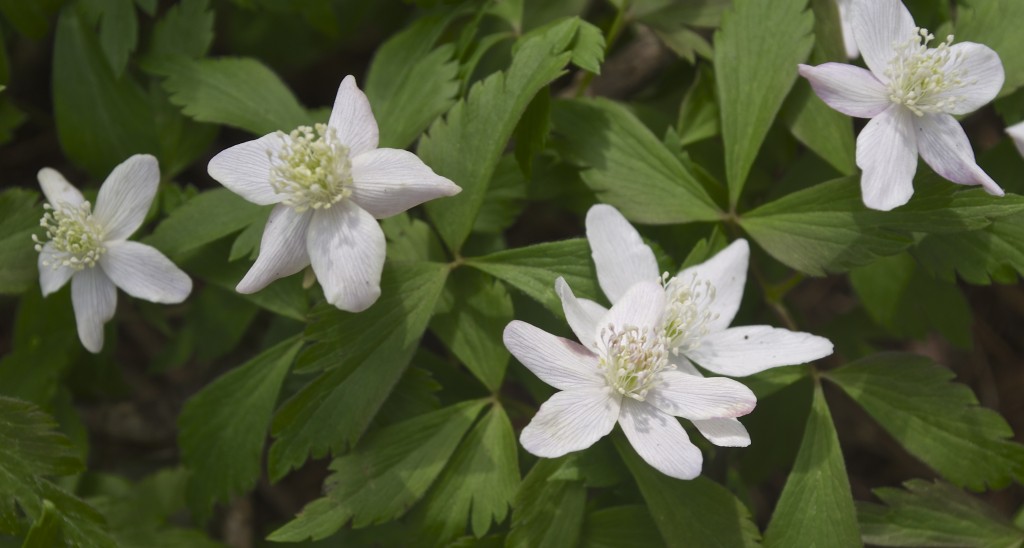 These are common in the local woods, can cover large areas. They grow from rhizomes. Buttercup family. Poisonous. Native. Photo: May 2, 2013.
These are common in the local woods, can cover large areas. They grow from rhizomes. Buttercup family. Poisonous. Native. Photo: May 2, 2013.
Wood Anemone, Windflower, Nightcaps (Anemone quinquefolia)

These buds are especially interesting, so densely packed. My sources are conflicting about differentiating between the different kind of ironweed, so I’m afraid this is just my best guess, based on the bract form and leaf shape. (Let’s just enjoy the look of it, whatever it is…) Composite family. Native perennial.
Tall Ironweed (Vernonia altissima)
These had feathery little flowers, and now with the cold weather, it’s time for the berries! Dr. Wesley Whiteside gave me these plants because I admired them in his garden, bright purple on bare branches in late October — they were just little twigs but they’ve done well. An important fall survival food for birds, when other sources are gone. Apparently, you can chop up a plant, boil and strain it, mix it with oil and beeswax to make a fabulous mosquito repellent. Also you can make jelly from the berries! (And yet, you can also use the leaves to make a poison to stun fish. Hm.) There is an indigenous form, American Beauty Berry, which has berries with no stems, clustered closer to the branch. This kind is native to Japan. Verbena family.
Japanese Beautyberry (Callicarpa japonica)
This is in the native plants area at Elm Bank. Around 6 feet tall. Very striking. Can easily be cultivated in gardens! Several native tribes made a tea of the roots to use an an emetic. Culver was an 18th century doctor who popularized its use. It’s related to digitalis (foxglove) and is toxic if ingested. Cotton Mather’s daughter died of Culver’s Root poisoning when she was treated with it for some minor malady. (Cotton Mather, 1663 – 1728, was a Puritan minister in Massachusetts, famous for his role in the Salem witch trials.) Snapdragon family.
Culver’s Root, Culver’s physic, Bowman’s root, Blackroot (Veronicastrum virginicum)
 This is in the medicinal garden at Elm Bank. A bee happened to fly through the frame as I was shooting! A perennial herb, native to Europe. Evidently it has historic medicinal uses, especially as a topical ointment, but is poisonous if taken internally. One of the common names was “knitbone.”
This is in the medicinal garden at Elm Bank. A bee happened to fly through the frame as I was shooting! A perennial herb, native to Europe. Evidently it has historic medicinal uses, especially as a topical ointment, but is poisonous if taken internally. One of the common names was “knitbone.”
Comfrey (Symphytum officinale L.)